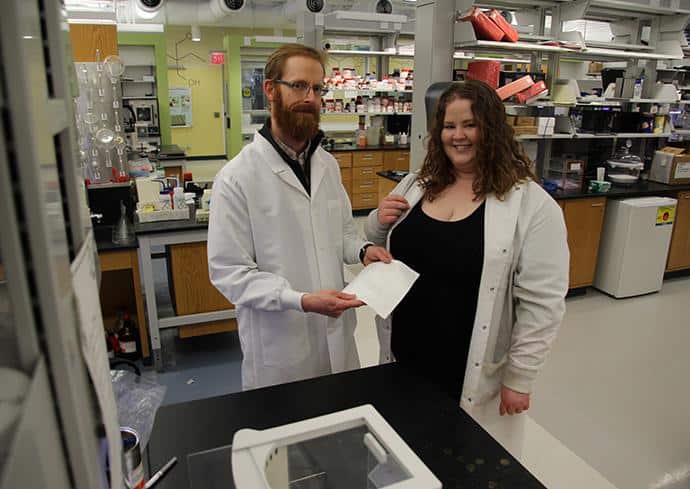
SMPs change shape in response to external stimuli like temperature changes or exposure to light. Biomedical applications include the use of SMPs as cardiovascular stents because they can be one shape for surgical insertion and another once positioned in a blood vessel. The warmth of the patient's body triggers the shape change.
Along with collaborators at Bucknell University in Pennsylvania, Syracuse University researchers have designed an SMP that can change its shape in response to exposure to enzymes and is said to be compatible with living cells. It requires no additional trigger, such as a change in temperature. Given these properties, it can respond to cellular activity like healing.
"The enzymatic sensitivity of the material allows it to respond directly to cell behaviour," said biomedical engineering Ph.D. candidate Shelby L. Buffington. "For instance, you could place it over a wound, and as the tissue remodelled and degraded it, the SMP would slowly pull the wound closed. It could be adapted to play a role in treating infections and cancer by adjusting the material's chemistry."
The research team includes Buffington, Justine E. Paul, Mark M. Macios, Professor James H. Henderson and Bucknell's Patrick T. Mather and Matthew M. Ali Ph.D. Their research, "Enzymatically triggered shape memory polymers," has been published in Acta Biomaterialia.
The team created the material using dual electrospinning, in which a high-voltage current is applied to two needle tips pumping two separate polymer solutions. The voltage draws out the polymer fibres, and they are blended into a fibre polymer mat. The proper combination of fibres gives the material its shape memory qualities.
Detailed in their paper, the teams analysed the material's properties, shape memory performance and cytocompatibility. Their experiments successfully demonstrated that the SMP's original shape could be recovered through a degree of reversal, or degradation, of the shape-fixing phase.
Today, the research team is examining their shape memory polymer in cancer and macrophage cell cultures. They hope that with additional research, they will uncover practical uses for their material using lower concentrations of enzymes, produced by less extreme cellular activity.
"We anticipate that the materials we're developing could have broad application in health care. For example, our SMPs could be used in drugs that only activate when the target cells or organ are in the desired physiological state, in scaffolds that guide tissue regeneration in response to the behaviour of the regenerating tissue itself, and in decision-making biosensors that guide patient treatment more effectively," Henderson said. "We're very excited to have achieved these first enzymatically responsive SMPs."





Glasgow trial explores AR cues for autonomous road safety
They've ploughed into a few vulnerable road users in the past. Making that less likely will make it spectacularly easy to stop the traffic for...